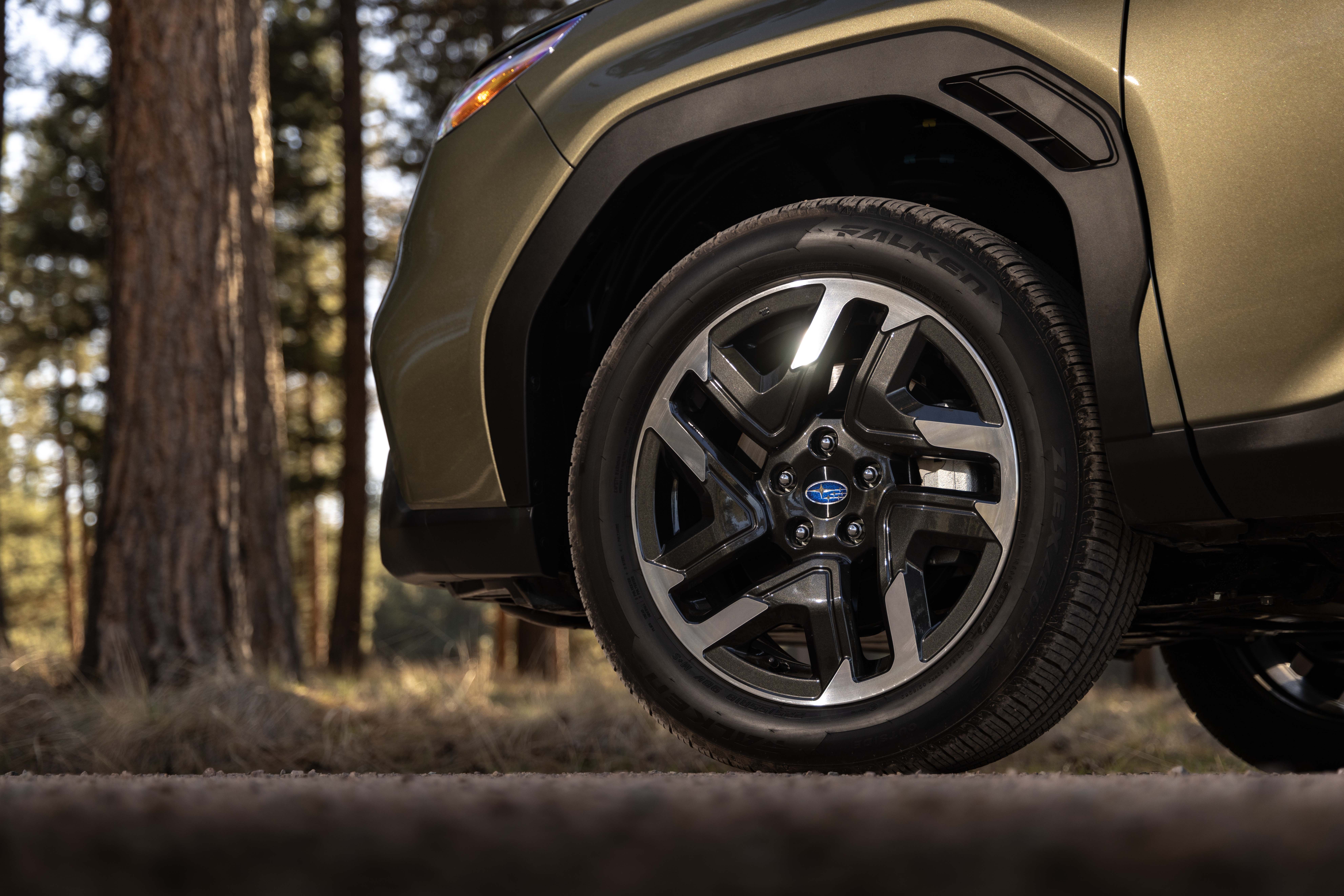EAST HADDAM, CT – The new-for-2025 Subaru Forester is a good example of a Japanese automaker being able to see through the trees and not lose sight of the big picture while focusing on the small details of continuous improvement. The result is nicer product overall.
As Subaru’s number one selling model, the Forester is now all grown up. It’s only slightly bigger than before (+0.6-inches length/+0.5-inches width/+0.7 cubic-feet cargo space) it looks more cultured with a pronounced grille combined with contemporary LED headlights.

According to Subaru, the model’s “bold shoulder lines emphasis height and strength, while its prominent wheel arches highlight its off-road capability.” Air outlets at the trailing edge of the front wheel openings improve aerodynamics, while the steep rear glass offers increased cargo capacity.
The Forester’s also more refined with improved interior accommodations with easy ingress and egress. A generous amount of glass area results in an open and airy aura, along with a sense of spaciousness within the cockpit. Contoured dash elements and textured trim bits are more upscale and user friendly. Greater front seat support helps improve comfort and reduce fatigue, and a dark headliner is now featured along with rear dark-tint privacy glass for a more cossetted cabin experience.

An 11.6-inch multimedia tablet/center information touchscreen display is included with Apple CarPlay and Android Auto. Additional features include Bluetooth hands-free phone and audio streaming connectivity; AM/FM stereo; rear vision camera; SiriusXM All-Access Radio and SiriusXM Travel Link (4-month free Platinum Plan); HD Radio; and over-the-air updates. Voice-activated navigation that’s powered by TomTom® and SiriusXM Travel Link (3-year free subscription) may be had.
The Forester’s climate control system has been updated to focus on occupied seats (versus the entire cabin) for improved comfort and fuel economy. Dual-zone heating/cooling control is standard across the model line.
Available for the first time on a Subaru model is a new kick sensor-activated hands-free power rear gate. It enables owners to open and close the rear gate automatically simply by placing their foot under the rear bumper cover.

All trim levels feature a comprehensive list of standard features including remote keyless access; tire pressure monitoring system with individual wheel display; and steering responsive LED headlights with automatic high beam and welcome lighting.
The 2025 edition comes standard with a 2.5-liter Subaru Boxer engine that delivers 180 horsepower and 178 pound-feet of torque through a Lineartronic CVT (Continuously Variable Transmission). It delivers 26 City and 33 Highway miles per gallon and tows 1,500 lbs. The rubber meets the road by way of symmetrical all-wheel drive.
The Forester is responsive and fun to put through its paces. But when it comes to fully enjoying Connecticut’s tight and twisty two lanes, that’s best left to the company’s WRX sport sedan.

An improved version of Subaru’s award-winning EyeSight Driver Assist Technology is included, which is quicker and smoother under a greater range of conditions than prior versions through a wider field of view, updated control software, and the addition of an electric brake booster. EyeSight can identify cyclists and pedestrians at intersections sooner and, when necessary, alert the driver and apply braking to avoid collisions.
Standard Emergency Stop Assist activates if the driver becomes unresponsive to warnings while using cruise control. The system will stop the vehicle, activate the hazard lights, unlock the doors and place an emergency call to Subaru Starlink Connected Services.


—
As is typical when it comes to Subaru model proliferation, the Forester is available in five trim levels. It begins with the $29,695 base example and rises to the $39,995 Touring package. I drove a $31,995 Premium line with $1,200 worth of options. There’s no hybrid alternative available.
Being a Subaru with its horizontally opposed, four-cylinder engine, the Forester remains a little noisy and growly on acceleration, although the familiar (for Subaru) digression is improving through acoustic windshield glass, more roof panel sound deadening, stronger welding techniques and a greater reliance on structural adhesives (for a 10% increase in body stiffness).
Having matured into well-earned adulthood, the Forester provides an example that Subaru capably continues to see the forest through the trees.

(Photos courtesy of Subaru unless otherwise noted)
 RIDE-CT – Classic Cars Celebrating Classic Cars in Connecticut
RIDE-CT – Classic Cars Celebrating Classic Cars in Connecticut


